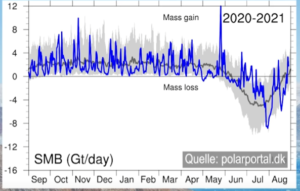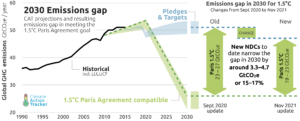A hugely funny thing happened on the outskirts of COP 26. The press seems to have missed this huge news, but the Paris Accord’s goal of keeping global warming below 2 degrees has now been met. Well okay, it has just been promised by politicians. But if you take political promises seriously, as they do in COP-world, the end is here.
Specifically, several independent green analyses find that the various commitments made at COP 26 would limit global warming to just 1.8 or so degrees. The Paris target is “less than 2 degrees” so there you have it. Target met!
Where are the green headlines screaming “Planet saved”? Where are the green marches of celebration instead of protest?
The funny part is that this paper success raises big problems for the climate activist movement. All that remains is to makes sure the promises are kept. But these promises are for dates that range from from 2030 to way out in 2060 or 2070. There is almost nothing to do now as far as implementation is concerned. What are all these activists to do?
There are some technical things that need doing, at some point. In particular these big promises are not part of the actual COP. The COP is the Conference of the Parties to the UN Framework Convention on Climate Change, which includes over 200 countries, each of which has a veto.
None of these grand promises, even those made by over 100 countries like the methane reduction goal for 2030, are part of the official COP. In fact the thousands of national COP negotiators are reportedly “sour” because the grand announcements got all the press.
The actions of the COP are highly formal. What has to happen now is that all of these promises get incorporated into the official Nationally Determined Contribution (NDC) for each country that is a member of the Paris Accord. Even here the next round of updated NDCs is not due until 2025. So in a very real sense there is nothing urgent to do now, even though the Planet is saved (on paper).
Some of the global activists might simply reject the finding that the Paris target has been reached. This may be tough because one of these Earth saving analyses was done by the prestigious (to alarmists) International Energy Agency. IEA got a low 1.8 degrees of warming if all the agreements and public promises are met by every country.
Die hard alarmists might argue that the target is 1.5 degrees, not 1.8. But China has said officially that 1.5 is not the Paris Accord target and if people want it the entire Accord will have to be renegotiated.
There are some relatively immediate issues on the COP table that relate to these promises. One is finally establishing the global emissions trading system. Many of the “rich” country NDCs depend on trading in order to get to so-called net zero emissions. They need to buy indulgences for their air transport and shipping, which cannot be electrified.
Then there is the huge unresolved issue called finance. Many of the developing country NDCs are contingent on the rich countries paying the huge cost of getting to net zero, or even for hitting lesser targets like the 30% methane cut by 2030. The supposedly agreed on funding of $100 billion a year from 2020 through 2024 has yet to appear. Developing countries, led by an alliance of African leaders, is calling for a trillion a year beginning 2025, but that target too is a long way off.
Where does the climate alarmist movement go from here? Greta Thunberg in her new newly profane persona has asked of COP 26 “What the F are they doing in there.” The COPers can now answer “Saving the planet, what are you doing out there.”
Of course it is all just political promises. Many are economically impossible, some physically so. At this point that is not the point. The alarmist movement has the serious problem of apparent success. How they handle it will be fun to watch.



